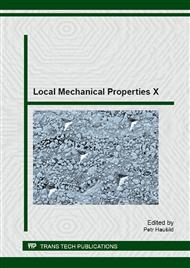p.111
p.117
p.121
p.125
p.129
p.133
p.137
p.141
p.145
Wear of Human Enamel and Dentin
Abstract:
The wear of human tooth enamel and dentin has been studied and compared using a repetitive constant load scratch test. Depth sensing indentation with spherical tip was used for measurement of hardness and reduced modulus. An analysis of residual wear tracks was performed with scanning laser confocal microscopy. A procedure for evaluation of repetitive scratch test was proposed. Results showed that the microtribological behavior of enamel differs obviously from that of dentin.
Info:
Periodical:
Pages:
129-132
Citation:
Online since:
March 2014
Authors:
Keywords:
Price:
Сopyright:
© 2014 Trans Tech Publications Ltd. All Rights Reserved
Share:
Citation:


